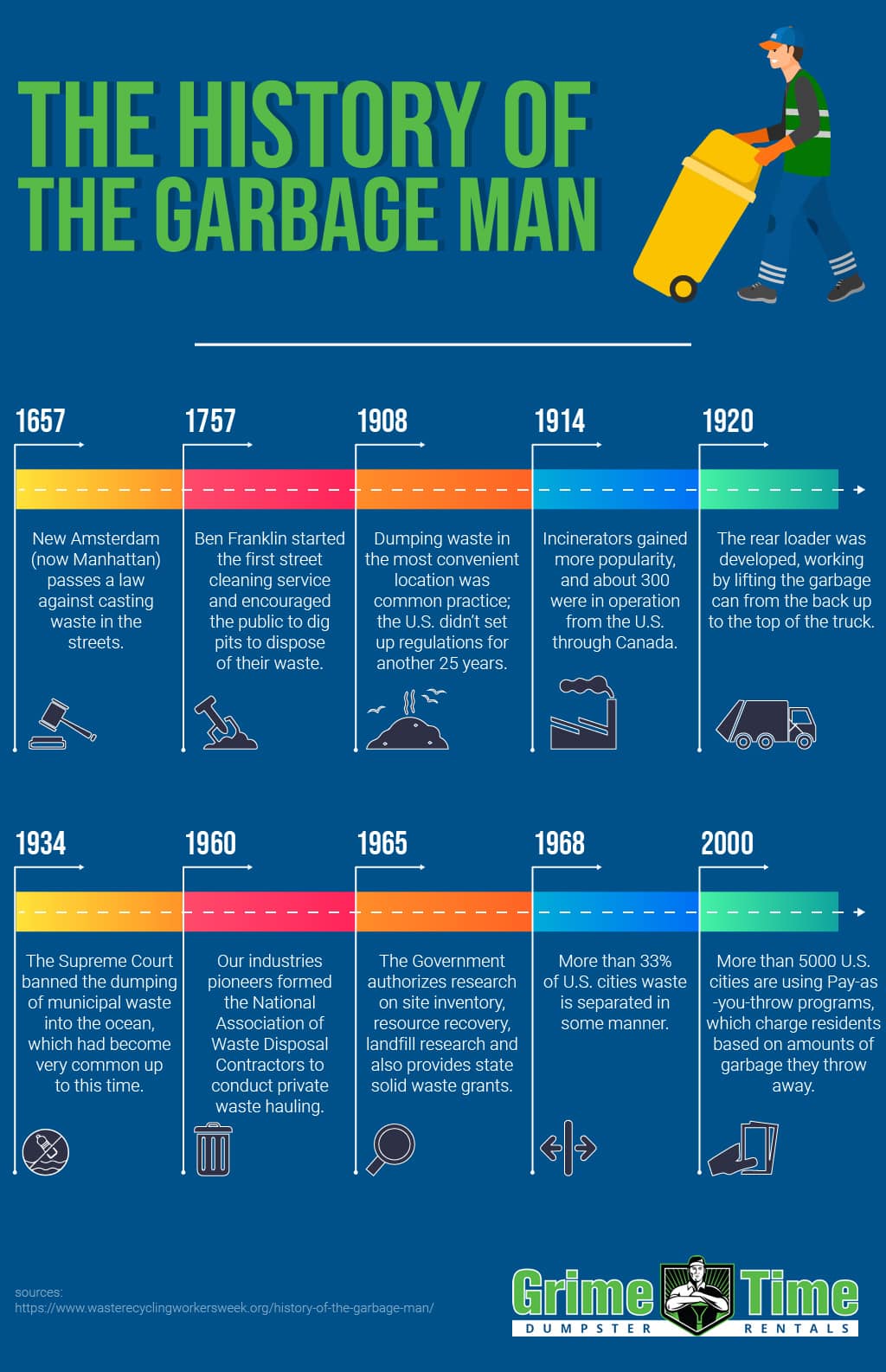A Complete History of the Garbage Man: All You Never Knew About One of America’s Unsung Heroes

Share this Image On Your Site
Take a moment to imagine your city without the garbage collector. If it’s a situation difficult for you to envision, consider that, for a large amount of human history, people around the world have regularly cast waste into the street, allowed it to accumulate behind homes, or – much more rarely – hauled it away themselves in carts or by hand only to pile it just outside the bounds of villages and cities. There, it was often buried, burned, fed to animals, or even left to fester. While some cities chose to simply ignore the waste, others chose to build on top of it, leading to disease, pollution, rat infestations, and terrible living conditions.
The Early Days: 1650 to 1920
Here in the United States, too, early colonists, city dwellers, and farmers alike were forced to develop techniques to ensure better living conditions. As early as 1657, the town of New Amsterdam – which would later become Manhattan, New York – passed laws prohibiting residents from casting waste into the streets. Unfortunately, it took other parts of the colonies many years to catch up. In fact, Benjamin Franklin was a major proponent of keeping trash off the streets of Philadelphia nearly 100 years later; in 1757, he began the first street cleaning service and encouraged residents to bury their waste away from public view.
In 1855, New York constructed the first incinerator designed to dispose of residential trash, although other public incinerators didn’t become common until nearly seventy years later. Slowly, however, most of the largest cities developed waste collection, most consisting of horse and cart teams that removed trash on a regular basis. In the meantime, most small town and rural residents continued to burn or bury their trash, send it to livestock farms for consumption, dump it in the most convenient location, or even shovel it into the ocean.
Modern Advances: 1920 to 2020
Fortunately, the past century has provided huge leaps in technology as well as public opinion regarding waste removal. Between the development of the rear loader motor truck in 1920, which allowed removal crews to expedite trash removal, and the official waste management regulations of the 1930s, which prohibited dumping into the ocean and began the use of the landfill, Americans were beginning to modernize and accept waste removal. By the 1960s, the Solid Waste Disposal Act authorized research and grants designed to improve disposal methods; at the same time, industry pioneers formed the National Association of Waste Disposal Contractors to privatize waste hauling.
By the 1980s and 90s, the country had formed the Environmental Protection Agency and set multiple recycling goals, each of which were met in record time. With Pay-as-You-Throw endeavors introduced into over 5,000 cities nationwide to encourage waste reduction as well as new, automated garbage truck and commercial roll-off dumpster technology to expedite removal and disposal of the remaining trash, our streets and neighborhoods are cleaner and safer than ever.
Is Your Neighborhood Clean?
We’ve come a long way since the early days of colonists throwing trash into the streets of New Amsterdam. If your neighborhood is clean, take a moment to thank your local garbage collector and appreciate the years of technology and regulation that enabled the men and women of the waste removal industry to serve you. For more information or to schedule your own roll off dumpster service, contact Grime Time at (512) 856-7355.
